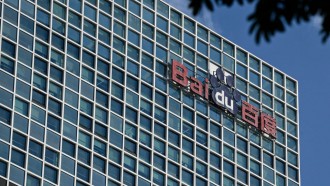Researchers find that artificial lighting has a negative impact on nocturnal pollination. These negative effects on nocturnal pollinators may also extend to diurnal pollinators.
Light Pollution And Pollination
Reducing bee colony populations isn't the only threat to plant pollination and biodiversity, as new research suggests that even light pollution has negative impacts on nocturnal pollination.
A study published in the journal Nature explored and explained the possible negative impacts of artificial lighting on nocturnal pollinators, and what they found was that even the diurnal or daytime pollinators are indirectly affected by these effects.
Researchers from the University of Bern used mobile streetlamps to study the effects of artificial lighting on nocturnal population. What they did was to illuminate half of 14 plots on Switzerland's pre-Alps with artificial lighting at night while leaving the other half in the dark as control.
What researchers found was that plots that were illuminated by artificial lighting were visited by 62 percent fewer insects than the plots that were left in the dark. Further, the diversity of pollinating insect visitors was 29 percent lower in illuminated plots.
These pollinators include bees, moths, beetles, and flies.
Daytime Pollinators Affected
Disturbingly, researchers also found that even though they aren't directly affected by artificial light, daytime pollinators are also indirectly affected by their effects. Because of the lack in nocturnal pollinators, daytime pollinators are finding it hard to keep up with production, which leads to less fruit production and less food sources for the pollinators themselves.
The researchers feel the need for further studies to see the exact effect and consequences of artificial lighting on daytime pollinators as well as the long-term effects of pollination losses.
Artificial Lighting
The artificial lightings that researchers used in the study were merely basic LED lamps used in streetlights. The results of the study show a disturbing trend in pollination problems especially since light emissions, particularly in residential areas, have seen a 70 percent increase in the last 20 years alone and continues to increase at approximately 6 percent each year.
Similarly, the behavior of other flying animals such as bats has also been seen to be impacted by artificial lighting. Because of this, researchers are calling for urgent action to reduce the negative consequences of light pollution on biodiversity and pollination.
"Urgent measures must be taken, to reduce the negative consequences of the annually increasing light emissions on the environment," said Eva Knop, coauthor of the research.
Researchers believe this is the first study regarding the impacts of nocturnal artificial light on pollinator-plant interactions.









